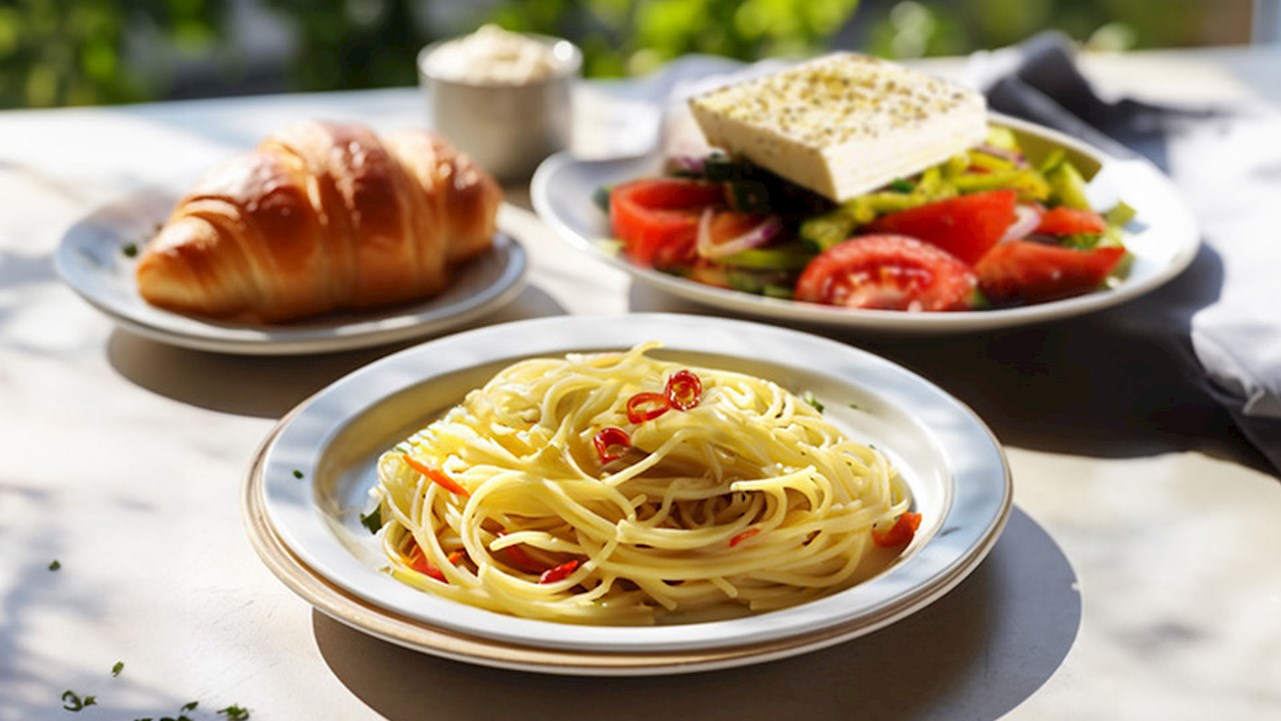Traditional dishes serve as culinary landmarks, deeply rooted in a culture's history, geography, and way of life. They tell tales of past generations, reflecting both abundance and scarcity, celebrations, and everyday rituals. Their importance lies in their ability to connect individuals to their ancestry, providing a tangible link to the past and a shared identity.
Over time, many traditional dishes have become global icons, those from Italy especially, mainly due to the impacts of globalization, migration, mass tourism, technological advances, cooking shows on every channel, and the fact that ingredients from all around the world are available practically at one's doorstep. Today, one can recreate the traditional flavors of almost any dish on the planet at home. Often, many of these dishes are mass-produced and are on the menus of most restaurants on the planet.
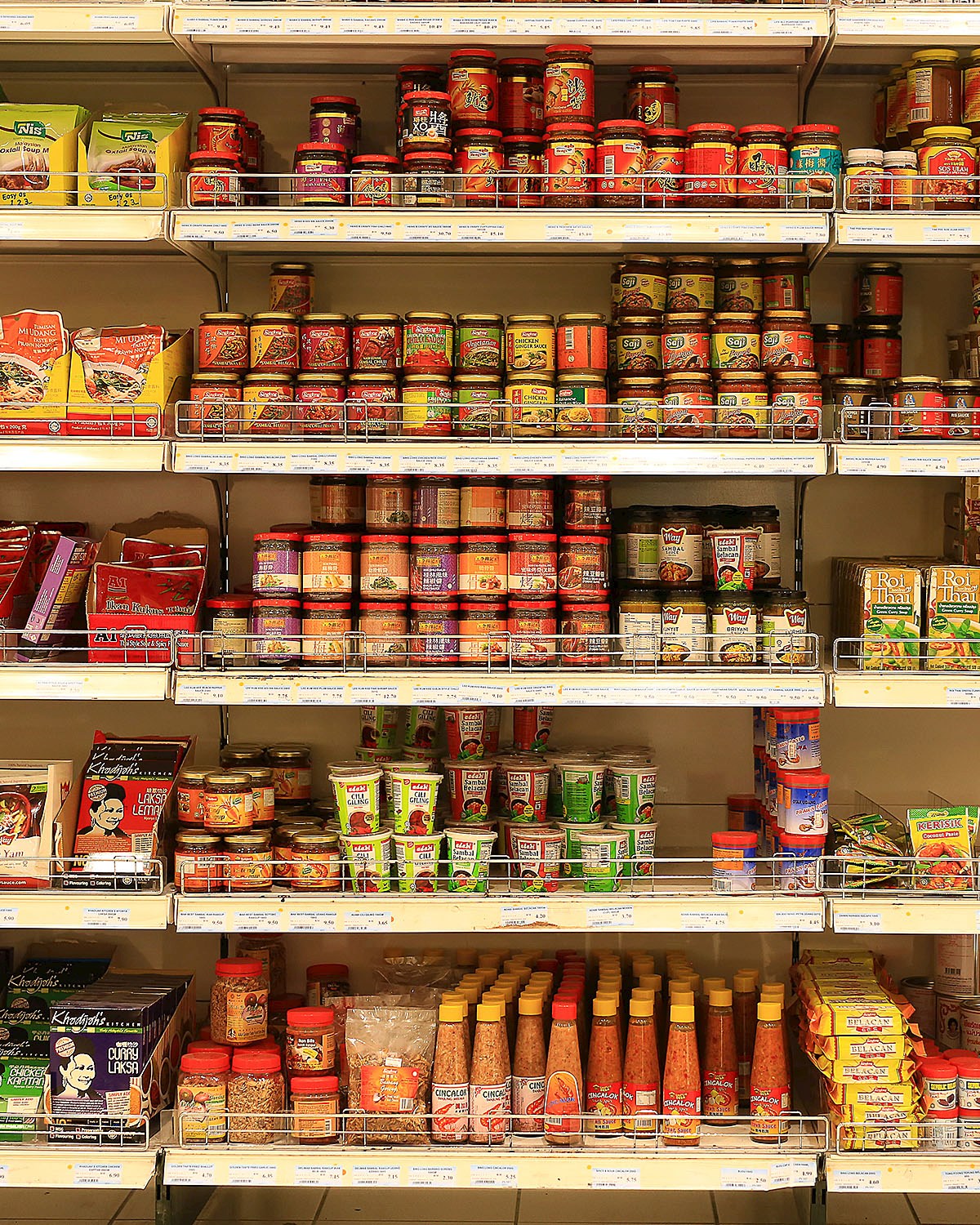 Credits: Shutterstock
Credits: Shutterstock
Change is inevitable, and with dishes, too
Yet, in today's fast-paced living culture, due to all of the reasons mentioned earlier, plus the rise of diets like veganism, dishes undergo transformations resulting, more often than not, in losing authenticity. This is most evident with Italian cuisine, but also with some classics from other cuisines, such as Japanese, Chinese, French, and so on.
These modifications have taken on a life of their own, so much so that nowadays, we have hybrid cuisines, such as Italian-American and Tex-Mex. Many dishes, traditional in the country of origin, have been adapted and spun so much that it ends up a version in its own right — think of how many types of pizzas there are in the world, or how many dishes from Spain and Portugal have their variants in Latin America. The rise of veganism and health-conscious eating has also birthed dishes such as beetroot hummus, for example.
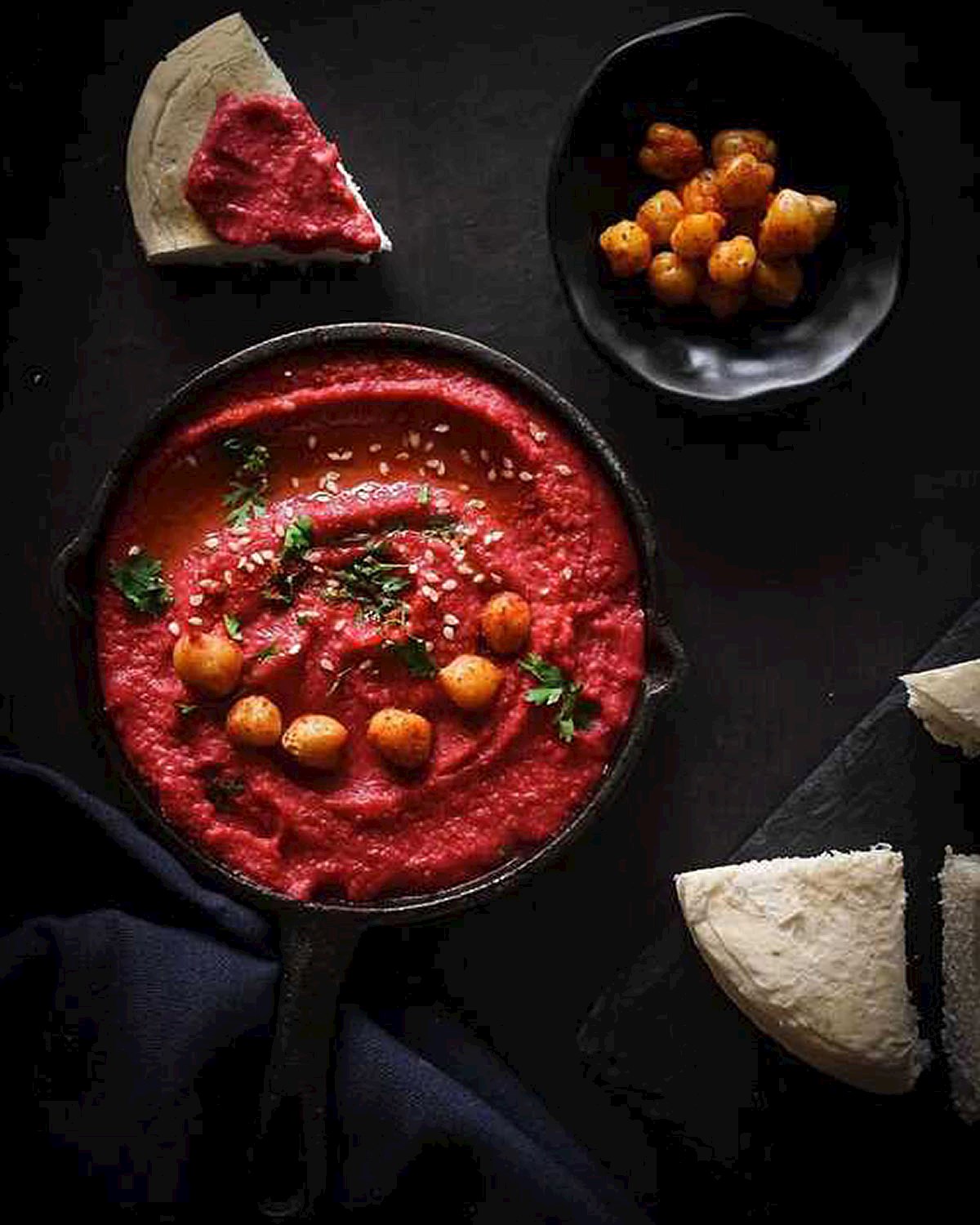 Credits: Tarisha Prakash
Credits: Tarisha Prakash
And although there's nothing wrong with adapting a dish to one's taste, we also need to make sure the original doesn't get lost in translation and that we do not succumb to using low-quality ingredients. This also means we need to educate ourselves and others on the food, history, and culture of the many nations we have on this planet, especially our own.
12 TRADITIONAL DISHES THAT OFTEN GET A BAD TREATMENT
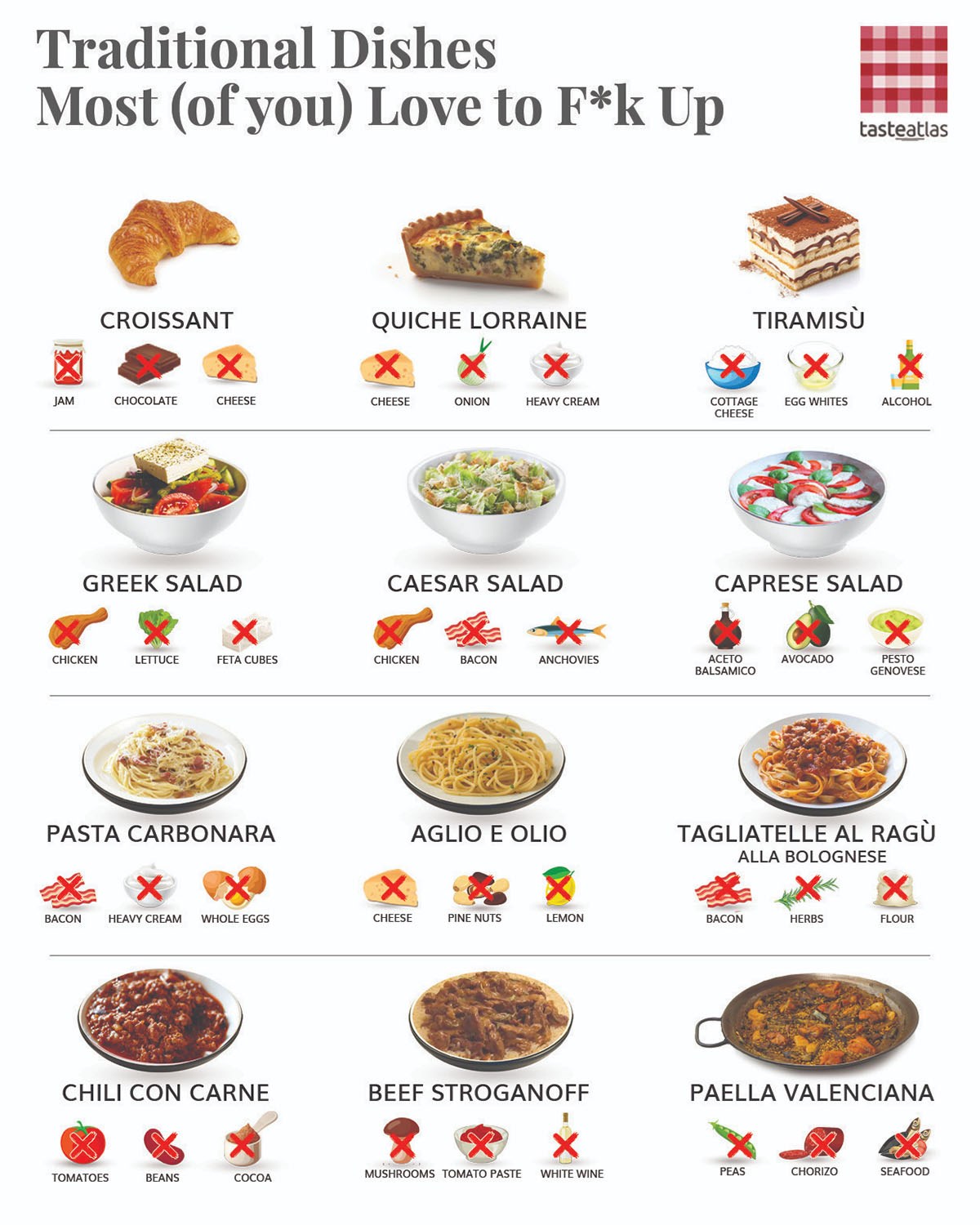 Credits: TasteAtlas
Credits: TasteAtlas
Aglio e olio
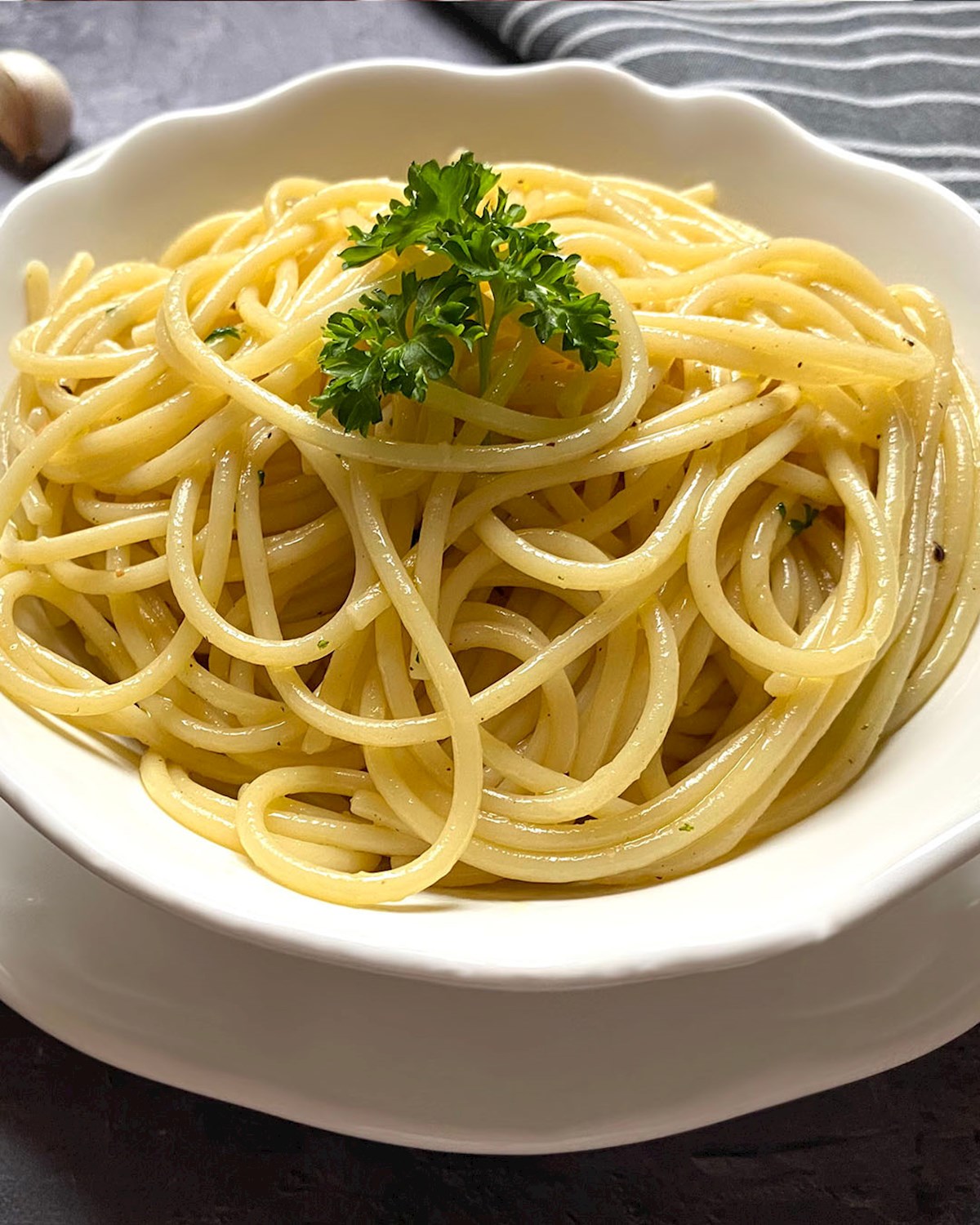 Credits: Shutterstock
Credits: Shutterstock
Aglio e olio, translating to "garlic and oil," is a minimalist dish that celebrates the simplicity of its core ingredients: spaghetti, fresh garlic, olive oil, and red pepper flakes. Its beauty lies in the delicate balance of flavors, where garlic is lightly sautéed until just golden and then combined with the pasta and, often, a hint of spiciness from the pepper flakes. Authentic aglio e olio does not use cream, parsley, pine nuts, or cheese. Inauthentic versions might introduce additional ingredients like sun-dried tomatoes, anchovies, or shrimp; some might mistakenly add Parmesan or cream.
For an authentic recipe with measures, instructions, and cooking tips, click here.
Pasta Carbonara
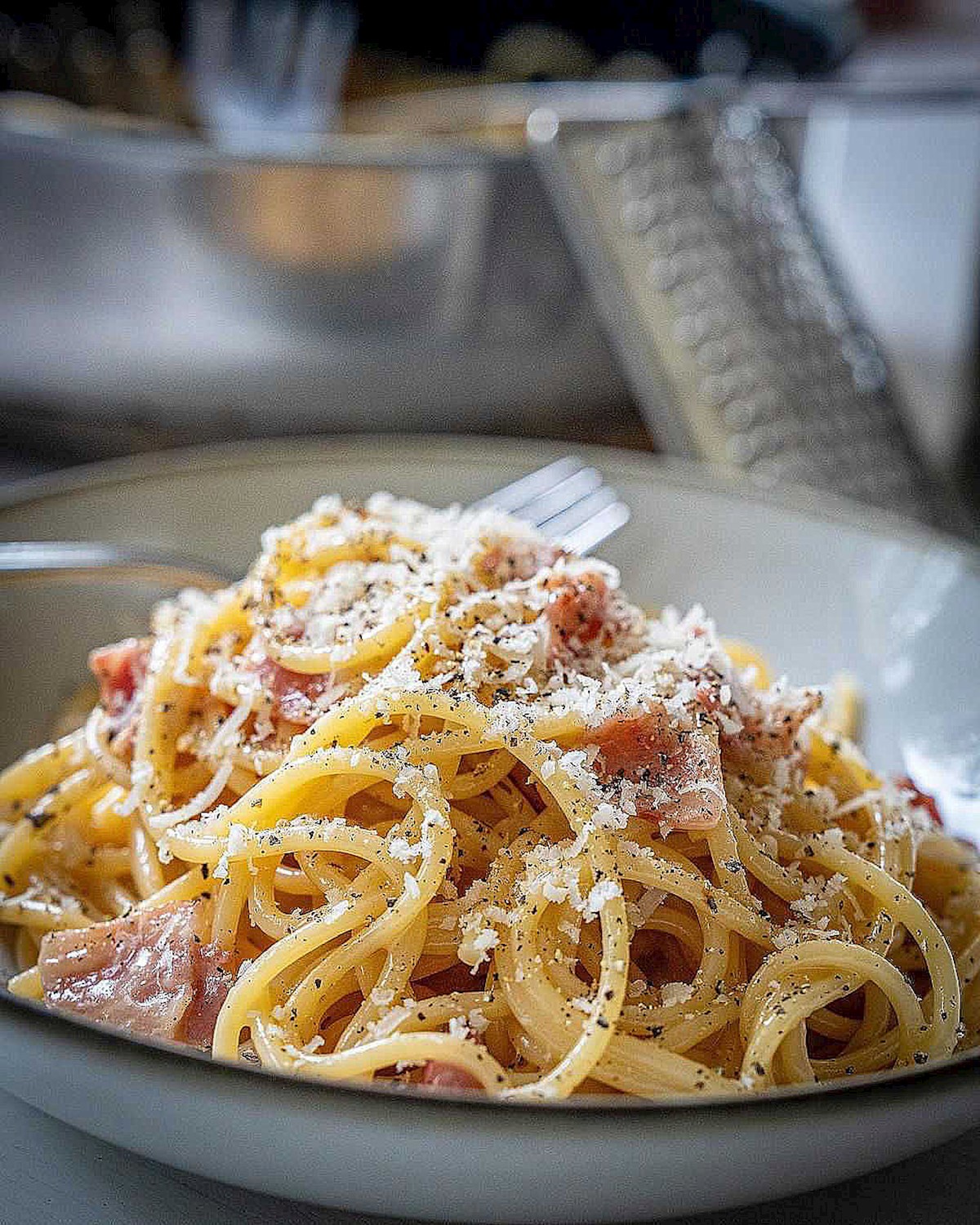 Credits: Anders Gustavsson
Credits: Anders Gustavsson
Carbonara is a Roman pasta dish celebrated for its creamy texture and rich flavor. It is traditionally made using egg yolks, pecorino cheese, guanciale (cured pork cheek), and black pepper. Contrary to some versions outside of Italy, the authentic Roman recipe does not include cream and bacon. The sauce is created by tossing the pasta with the raw egg mixture, using the heat of the just-drained pasta to cook the eggs and form a silky coating.
For an authentic recipe with measures, instructions, and cooking tips, click here.
Tagliatelle al Ragù alla Bolognese
 Credits: mymy915
Credits: mymy915
Ragù Alla Bolognese is a rich meat sauce that originates from Bologna, Italy. Traditionally, it is made with a blend of finely chopped meats, including beef and pork, simmered with a soffritto of onion, celery, and carrot, tomatoes, and wine. Authentic Bolognese is characterized by its slow-cooking process, which allows the flavors to meld and develop depth. It's typically served with tagliatelle, a broad, flat pasta, and not the spaghetti commonly found in "spaghetti bolognese" dishes outside of Italy. Inauthentic versions might use ground beef exclusively, add herbs like basil or oregano, and may be thicker and tomato-heavy compared to the genuine sauce.
For an authentic recipe with measures, instructions, and cooking tips, click here.
Greek Salad (Horiatiki)
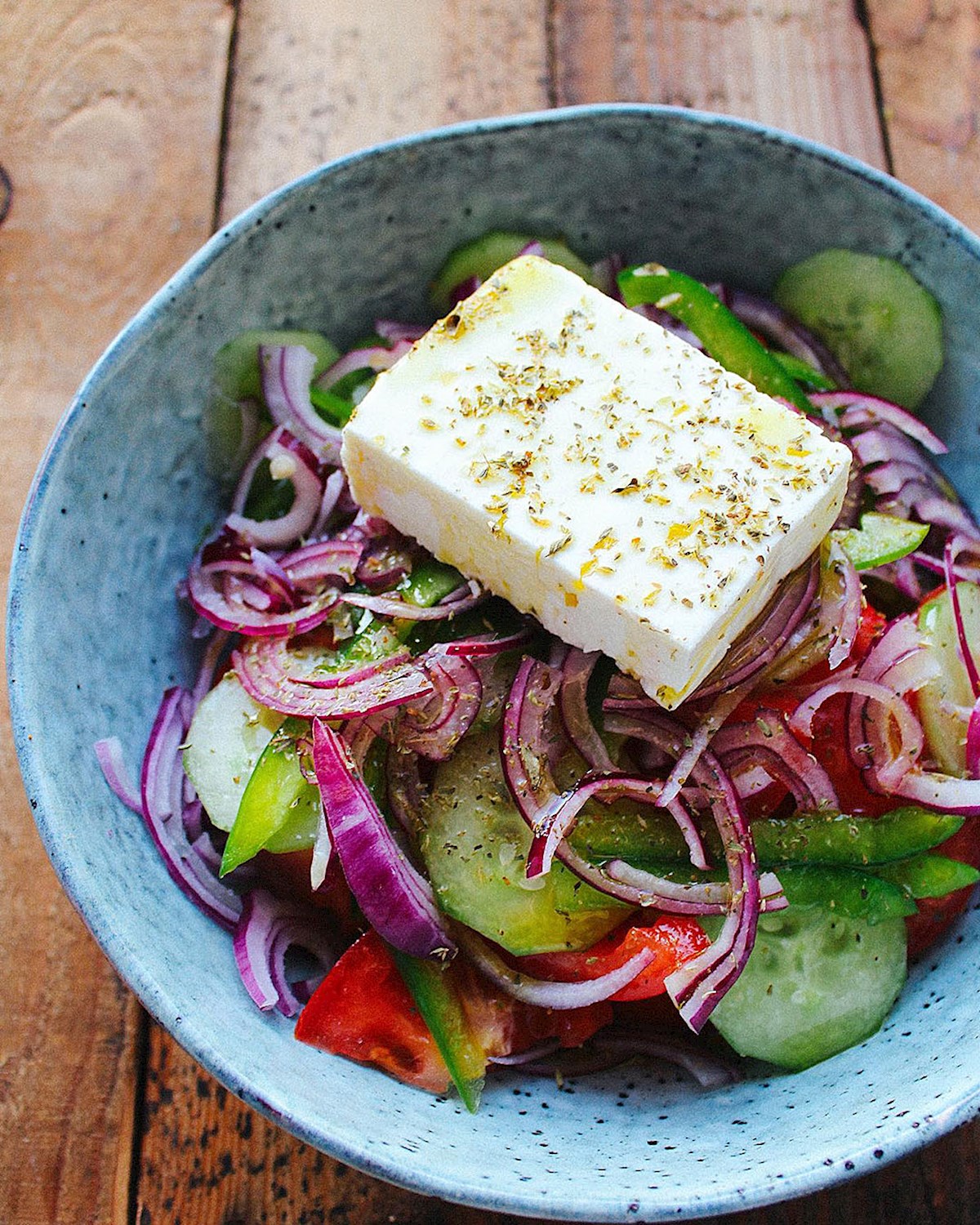 Credits: My Little Expat Kitchen
Credits: My Little Expat Kitchen
Greek salad, known as horiatiki in Greece, is a refreshing medley of ripe tomatoes, cucumbers, red onions, olives, feta cheese, and often, green peppers. Unlike many salads globally, it typically doesn't involve lettuce or any leafy greens. The ingredients are generously dressed with olive oil, accompanied by a sprinkle of oregano. The large slab of feta, sometimes garnished with oregano, rests on top, making it a distinctive feature of the dish. Inauthentic versions, especially outside of Greece, often introduce additions like lettuce, stuffed olives, lemon juice, or even creamy dressings.
For an authentic recipe with measures, instructions, and cooking tips, click here.
Caprese Salad
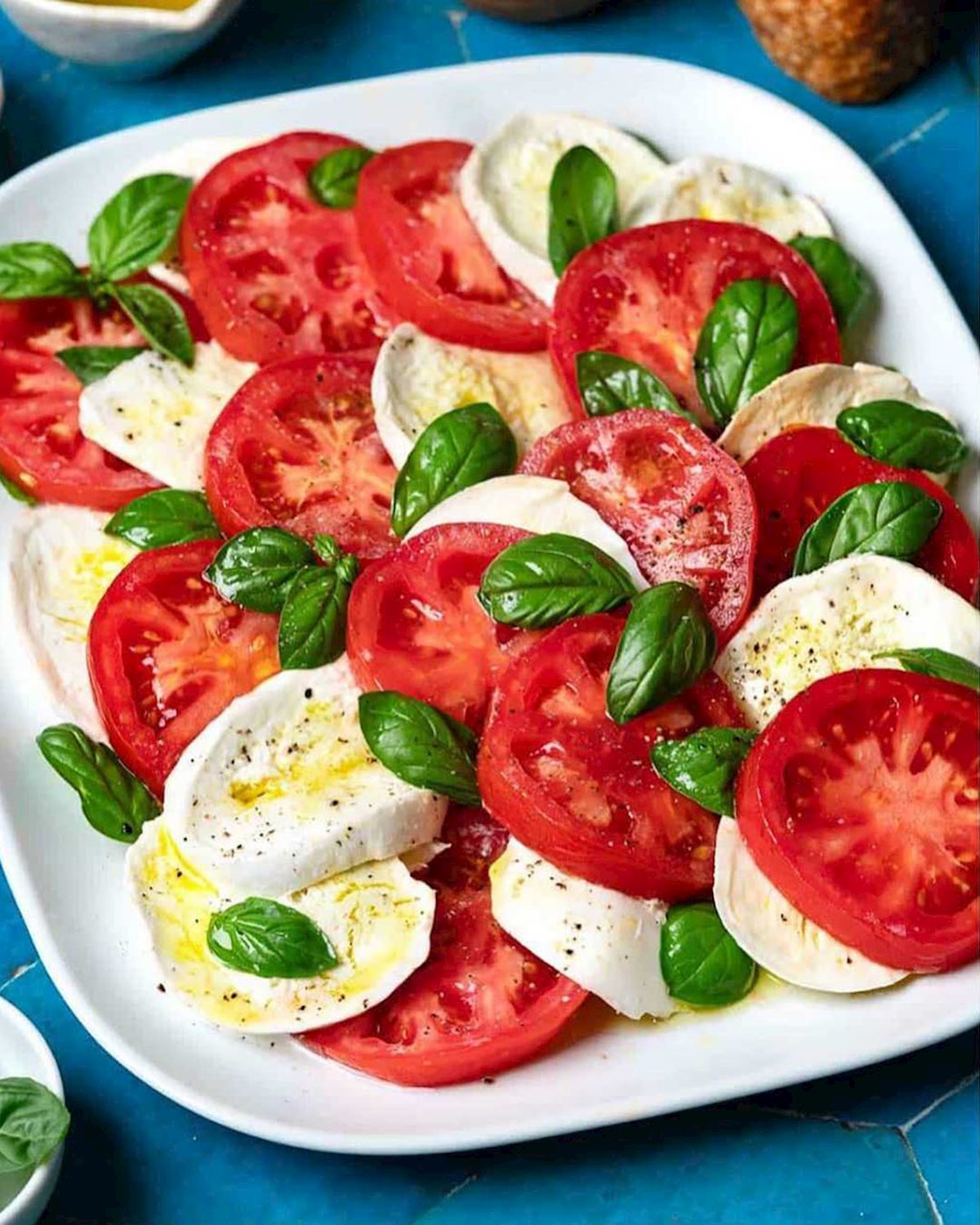 Credits: Domenica Cooks
Credits: Domenica Cooks
Caprese salad, or "insalata Caprese," is a simple Italian dish that celebrates the vibrant flavors of fresh tomatoes, mozzarella cheese, basil, and olive oil. Originating from the island of Capri, this salad traditionally consists of these key ingredients layered or arranged in alternating patterns, seasoned with just a pinch of salt. Over time, variations have emerged with additions like balsamic glaze, avocados, or pesto, deviating from the original.
For an authentic recipe with measures, instructions, and cooking tips, click here.
Caesar Salad
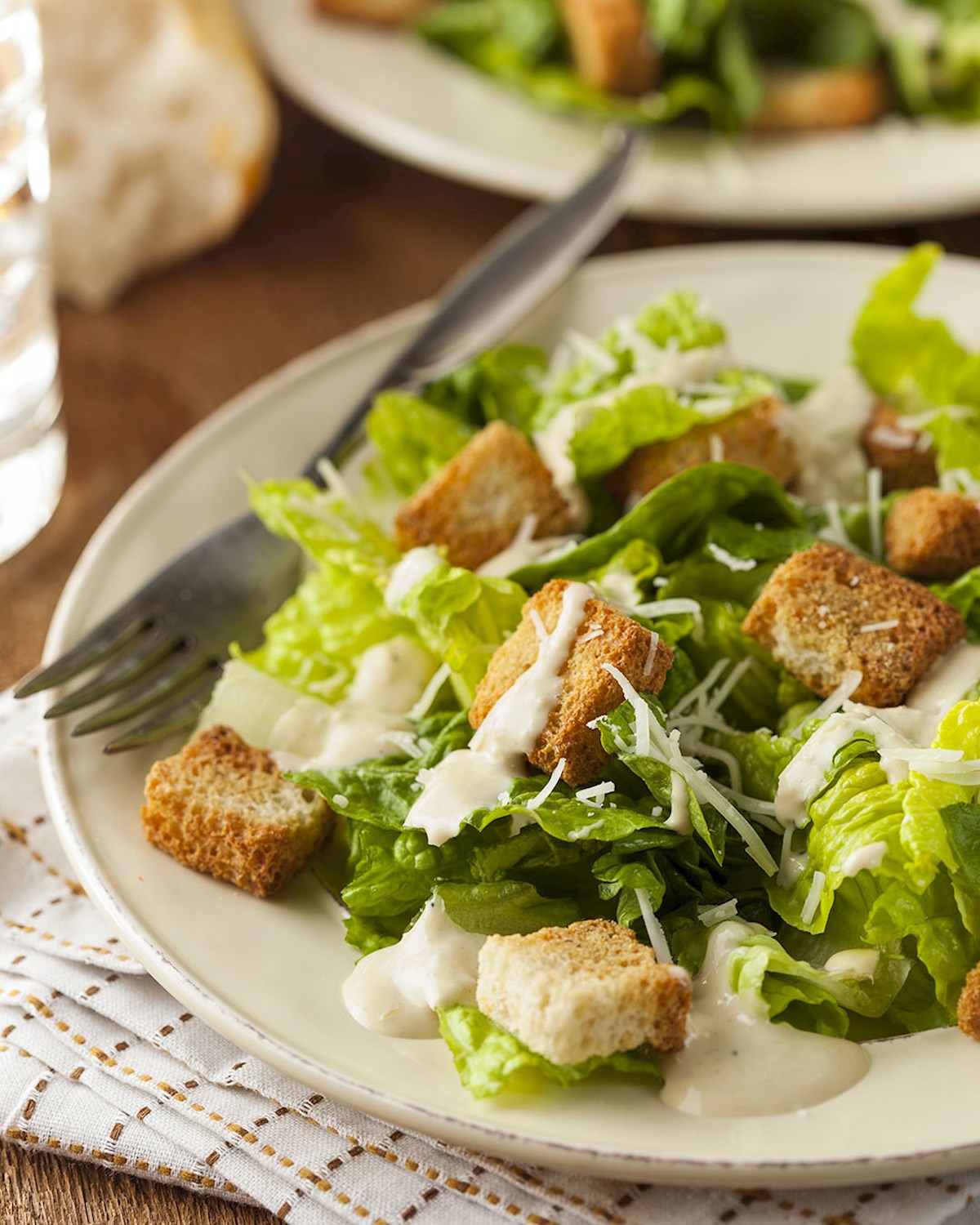 Credits: Shutterstock
Credits: Shutterstock
Caesar salad is a classic dish that originated in Tijuana, Mexico, created by Italian-American restaurateur Caesar Cardini in the 1920s. Contrary to popular belief, it has no direct connection to the Roman emperor of the same name. The salad traditionally consists of romaine lettuce, croutons, and Parmesan cheese, dressed with a unique blend of egg, garlic, Worcestershire sauce, lemon juice, and olive oil. Over time, many variations have emerged, with additions like grilled chicken or bacon.
For an authentic recipe with measures, instructions, and cooking tips, click here.
Paella Valenciana
 Credits: Shutterstock
Credits: Shutterstock
Paella Valenciana is a celebrated dish from the Valencia region of Spain, traditionally cooked over an open flame in a wide, shallow pan called a paellera. The classic ingredients include rabbit, chicken, green beans, white beans, and sometimes snails, all infused with the flavor of saffron and rosemary. Modern variations, especially those tailored for international palates, often incorporate ingredients like seafood, chorizo, peas, or bell peppers, which are not found in the authentic version.
For an authentic recipe with measures, instructions, and cooking tips, click here.
Chili con Carne
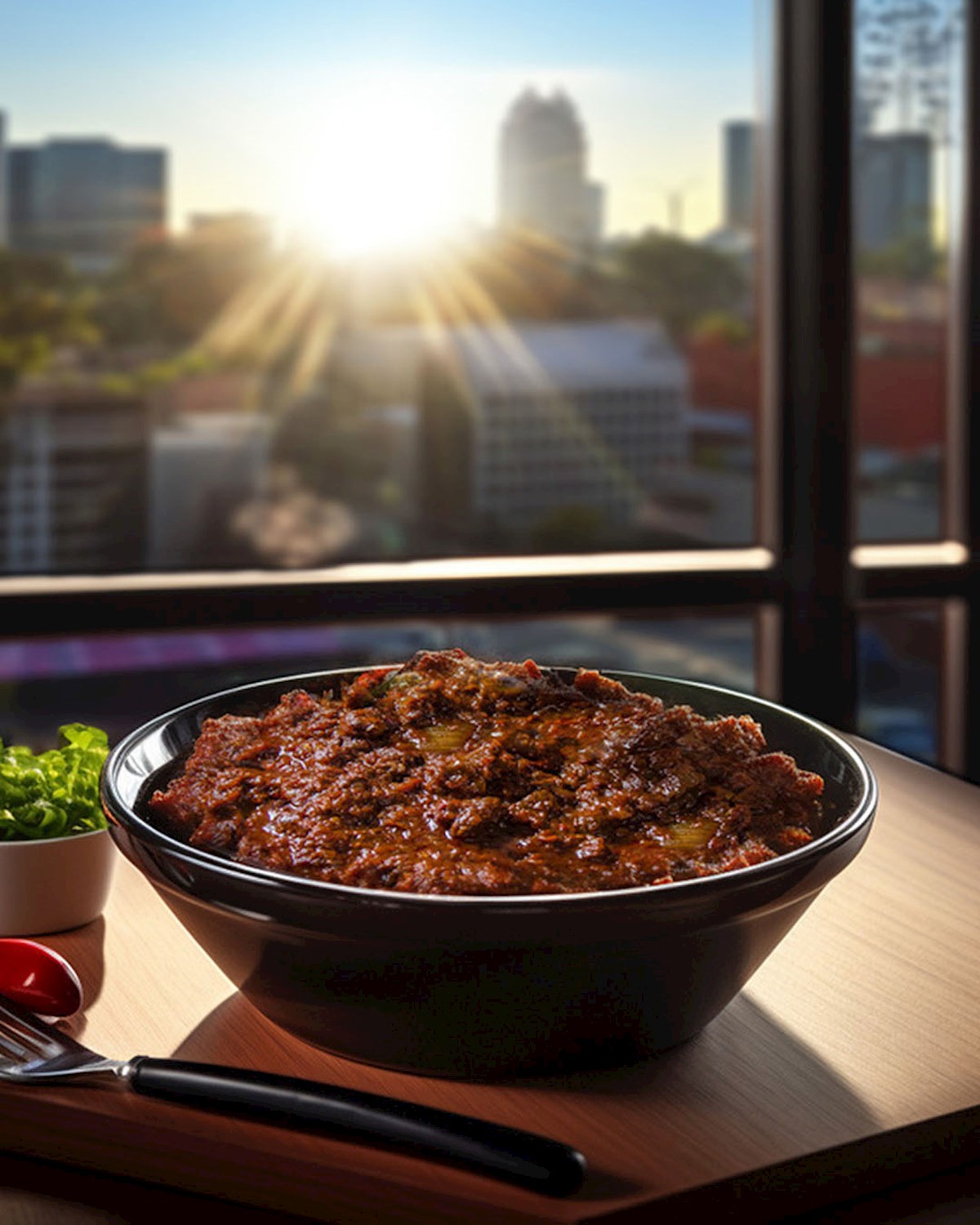 Credits: TasteAtlas
Credits: TasteAtlas
Chili con carne, often simply called chili, is a spicy stew that originates from the American Southwest, particularly Texas. The traditional recipe primarily consists of beef, chili peppers, onion, and a mix of spices. In the staunchest Texan tradition, beans are considered an outsider and are not included in the authentic version.
However, as chili con carne gained popularity outside of Texas, many variations emerged, with tomatoes and beans, especially kidney beans, becoming a common addition. Other non-traditional ingredients, such as corn, mushrooms, or even pasta or chocolate, can be found in some adaptations.
For an authentic recipe with measures, instructions, and cooking tips, click here.
Beef Stroganoff
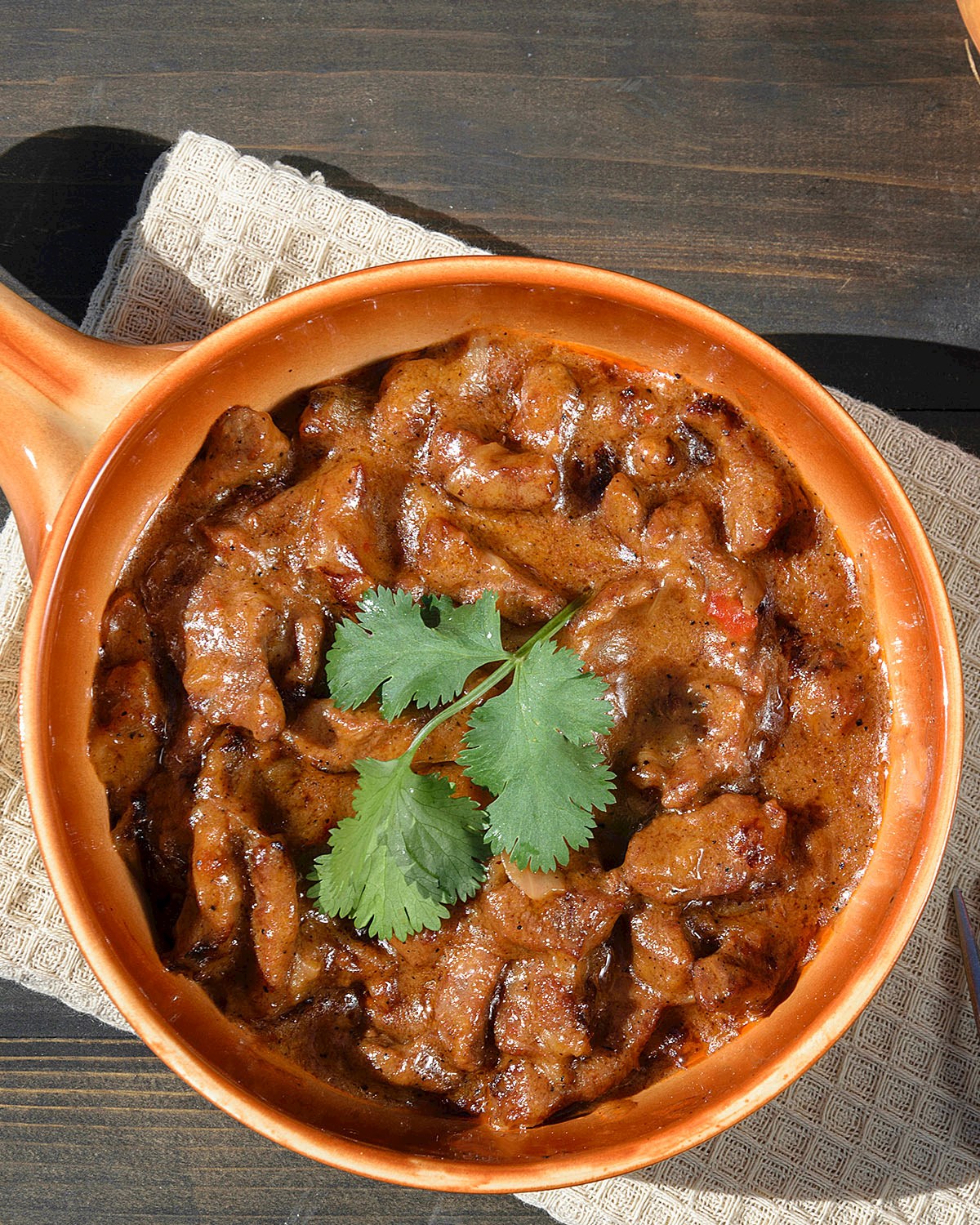 Credits: Shutterstock
Credits: Shutterstock
Beef Stroganoff, hailing from Russia, is a creamy dish originally made with sautéed beef pieces and a rich sour cream sauce. It became popular in the 19th century and traditionally did not contain mushrooms or onions, though many modern renditions do. Authentic beef Stroganoff is usually served with potatoes or crisp straw fries, rather than the noodles or rice often seen in Western adaptations. The dish's essence lies in its luxurious sauce and tender beef, typically devoid of embellishments like white wine, Worcestershire sauce, or tomato paste.
For an authentic recipe with measures, instructions, and cooking tips, click here.
Quiche Lorraine
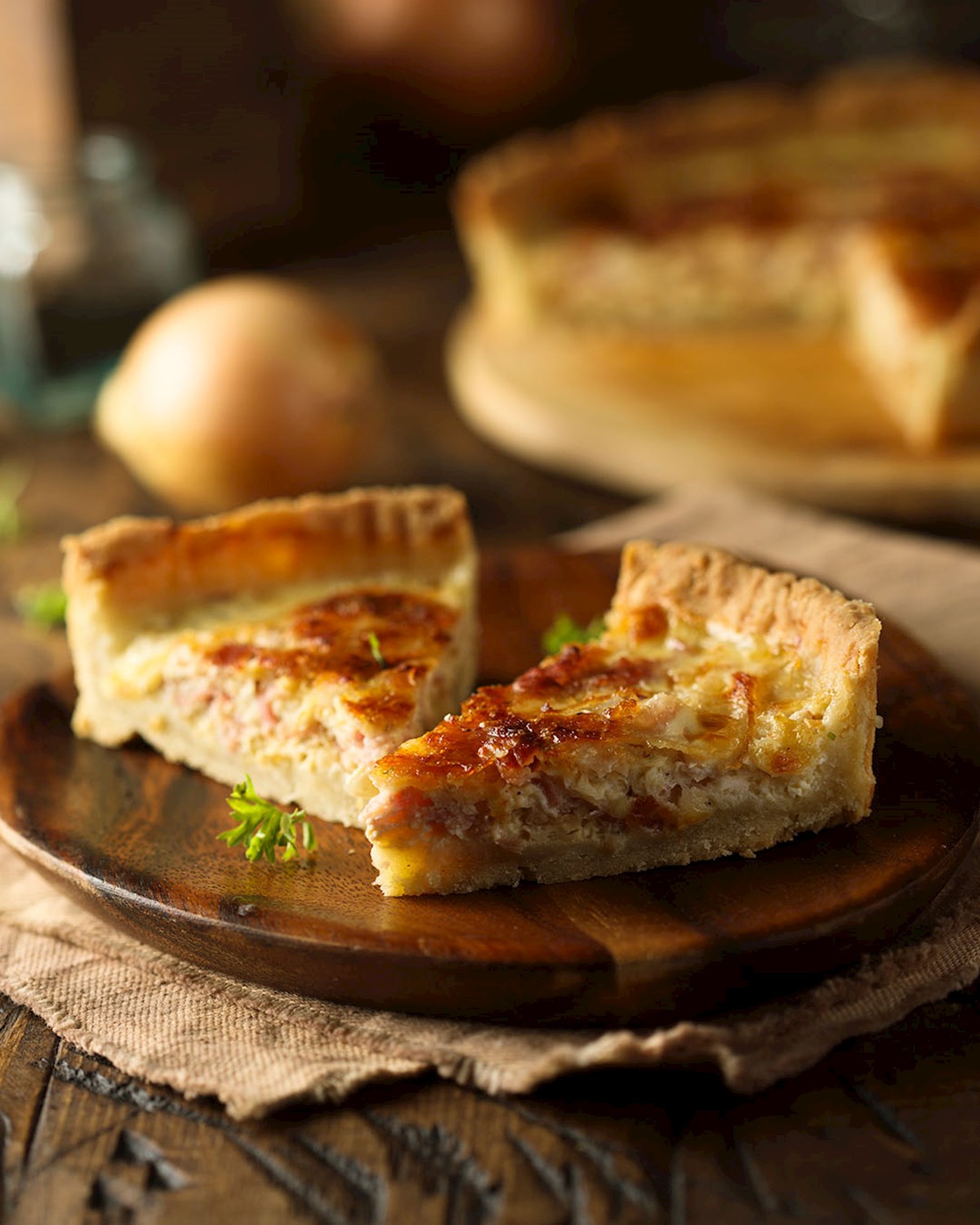 Credits: Shutterstock
Credits: Shutterstock
Quiche Lorraine is a savory pie originating from the Lorraine region of France. It features a rich filling made from eggs, cream, and smoked bacon or lardons, all encased in a buttery pastry crust. Over time, variations have emerged, with many adding ingredients like cheese, onions, or mushrooms. However, traditionalists assert that a genuine Quiche Lorraine should only contain the classic trio of eggs, cream, and bacon. This dish is celebrated for its versatility, often enjoyed for breakfast, lunch, or dinner, and is a staple in both French bistros and international cafés.
For an authentic recipe with measures, instructions, and cooking tips, click here.
Croissant
 Credits: Shutterstock
Credits: Shutterstock
The croissant is a buttery, flaky pastry, iconic to French bakeries, but its origins are traced back to the Austrian kipferl. This crescent-shaped delight is made using a technique of layering butter and dough, which, when baked, results in its distinctive airy layers. Traditionally, a croissant does not contain a filling, allowing its pure buttery essence to shine. However, modern iterations often include various fillings, from almond paste to chocolate or ham and cheese. While these filled versions are enjoyed by many, purists often prefer the classic, unfilled croissant to savor its original taste and texture.
For an authentic recipe with measures, instructions, and cooking tips, click here.
Tiramisù
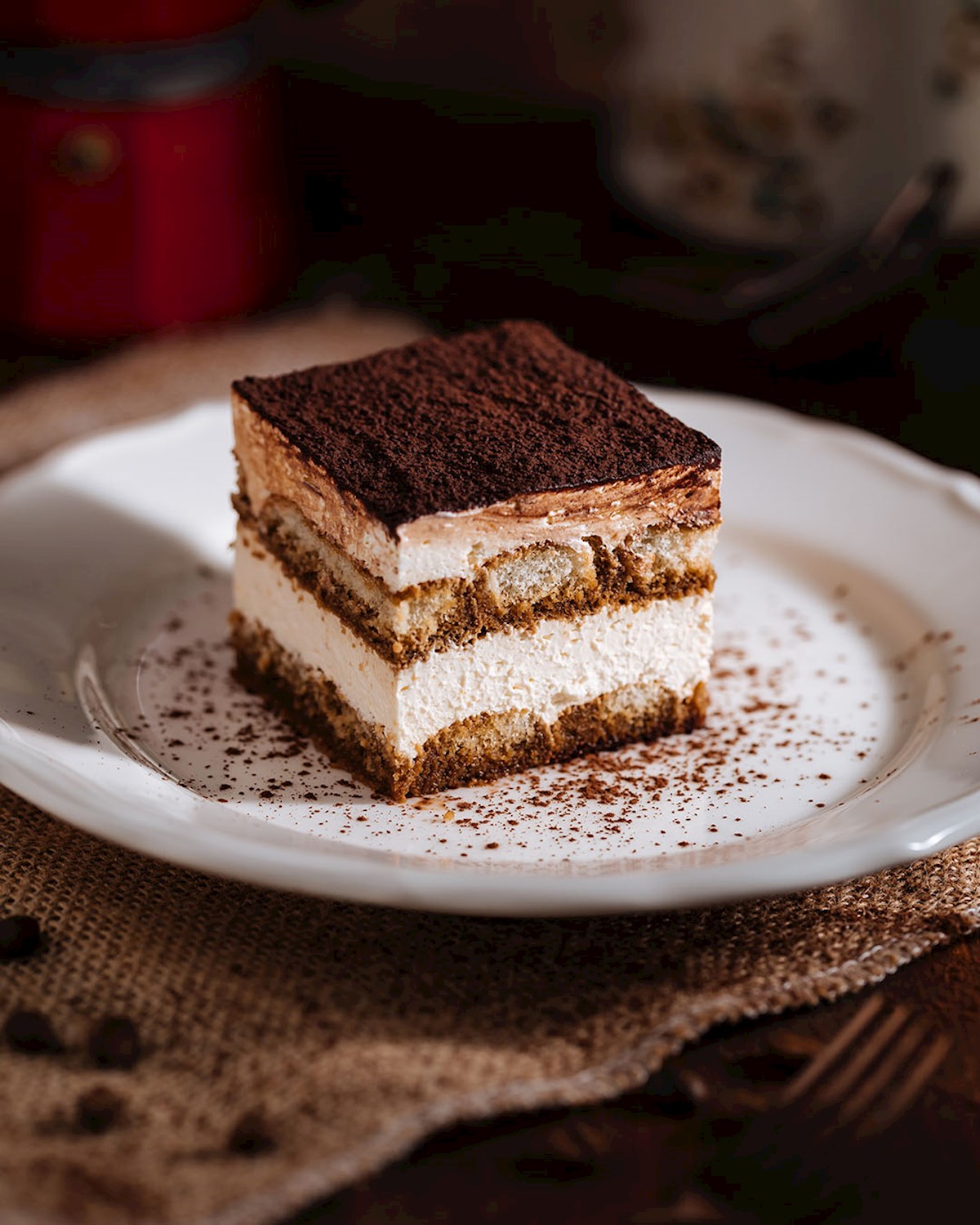 Credits: Shutterstock
Credits: Shutterstock
Tiramisu is a classic Italian dessert that translates to "pick me up," a nod to its caffeine content and invigorating taste. It's made of layers of coffee-soaked ladyfingers sandwiched between a creamy mixture of mascarpone cheese, eggs, and sugar. Cocoa powder is generously dusted on top, adding a rich depth to the dessert. While its exact origins are debated, many believe it hails from the Veneto or Friuli Venezia Giulia regions of Italy.
Traditional tiramisu doesn't contain any alcohol, but many versions introduce Marsala wine, rum, or brandy into the coffee soak for an added depth of flavor. Inauthentic variations can stray quite far from the original, incorporating ingredients like whipped cream, cottage cheese, chocolate chips, and fruit, or even using sponge cake instead of ladyfingers and turning the dessert into cakes or popsicles.
For an authentic recipe with measures, instructions, and cooking tips, click here.
